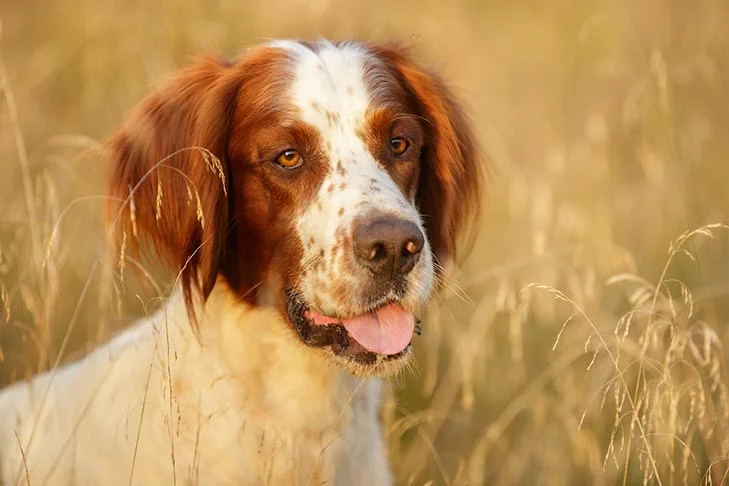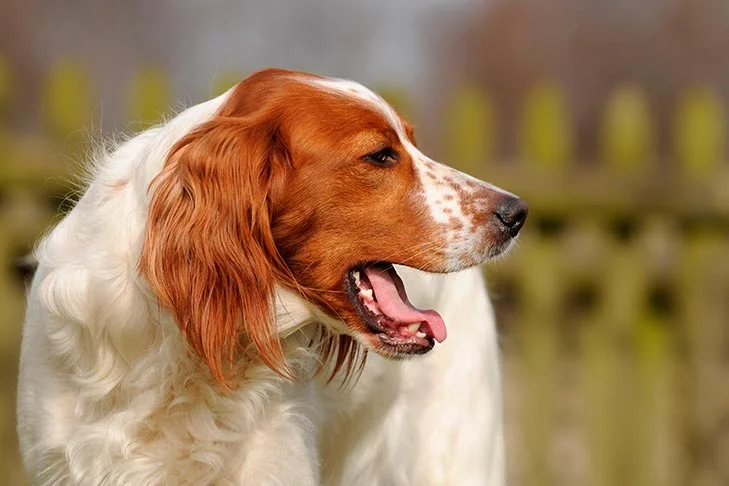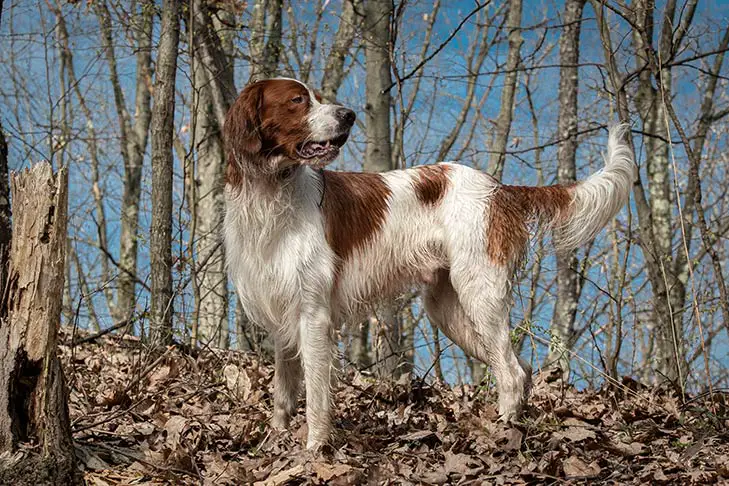The energetic Irish Red and White Setter is a medium-sized bird dog with great athletic ability that was bred particularly for hunting. Irish Red and Whites are a little bit shorter and stockier than their cousin the Irish Setter, but they are just as fun-loving, sociable, and high-spirited.
A majestic Red and White locked on point as immovable as a statue thrills sportsmen. These large to medium-sized bird dogs have the strength, stamina, and birds sense to complete the task any day of the week, including twice on Sunday. The eye-catching coat, which looks like brilliant red islands floating in a sea of pearl white, makes it easier for hunters to recognize their dog from a distance. The gorgeous face conveys an impression that is sharp but friendly.






 Health
Health Grooming
Grooming Exercise
Exercise Training
Training Nutrition
Nutrition